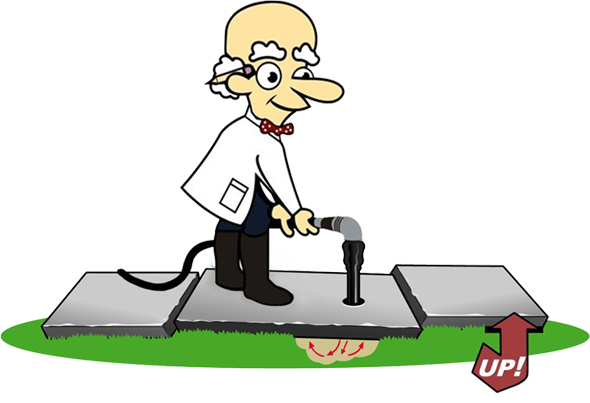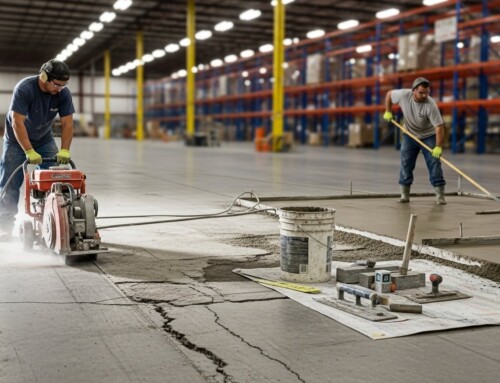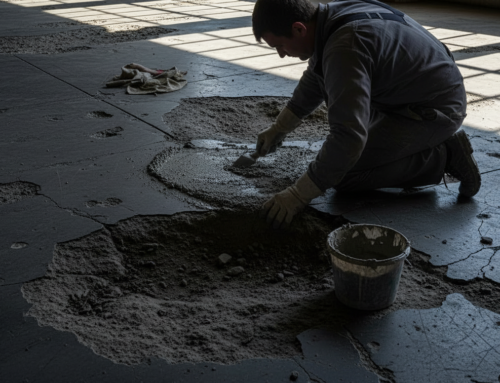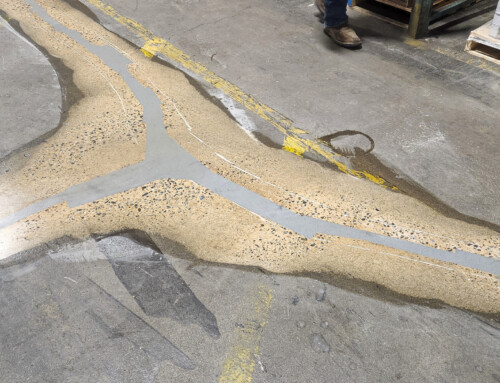IN THIS ARTICLE
Discover The Root Causes Of Damage To Concrete Floor Joints in Warehouses
Understanding what causes damage to concrete floor joints is essential for maintaining warehouse efficiency and safety. By knowing these root causes, you can take proactive measures to counteract damage before it escalates into costly repairs. This awareness helps in planning timely maintenance and hiring the right expertise to handle potential problems.
6 Main Causes of Flooring Joint Damage in Concrete Warehouses
Improper Installation Techniques
Improper installation techniques are a common culprit behind concrete floor joint damage in warehouses. Issues such as incorrect joint spacing or insufficient curing time can compromise the structural integrity of the floor slab.
These errors might not be immediately evident but can lead to significant issues over time, such as cracking and uneven surfaces along the slab edges. Additionally, incorrect slab width calculations can result in future installation problems, causing further structural instability.
Moreover, using substandard materials or failing to plan for the floor’s intended use can exacerbate these problems. Proper installation requires attention to detail and an understanding of load distribution and material properties. Skilled labor and high-quality materials can avoid these pitfalls and prevent extensive repairs down the line.
Impact and Abrasion Due to Heavy Loads
Warehouse floors are constantly exposed to impact and abrasion from heavy loads, which can significantly damage concrete floor joints, leading to floor deterioration. Forklifts, pallet jacks, and other heavy equipment frequently run over floor joints, causing wear and tear over time.
This wear is exacerbated by surface abrasion, particularly from forklift wheels that might not be adequately maintained. Each pass of machinery exerts pressure on the joints, leading to chipping, cracking, and eventually failing if not regularly maintained. Additionally, the weight of stocked goods can stress concrete beyond its capacity, especially if the load distribution is uneven. This constant pressure can cause joints to degrade faster than expected.
To address these issues, concrete slab repair and regular maintenance checks can bolster the joint’s resilience. Quick and effective repair solutions from our team of Warehouse Floor professionals can address warehouse floor cracks and minimize trip hazards.
Structural Movement and Settlement
Structural movement and settlement are inevitable in any building but can be particularly detrimental to warehouse concrete floor joints. As the ground beneath a warehouse shifts or settles, it creates voids that exert stress on the floor joints. This movement can cause misalignment, leading to joint opening or closing beyond their intended capacity.
When the warehouse structure itself experiences subtle shifts, whether due to natural settling or external forces like nearby construction, these movements can further exacerbate joint damage. This not only impacts the integrity of the floor but also necessitates solutions like retrofitting dowels to strengthen load transfer at critical joint locations.
Such shifts strain the integrity of the floor, especially if expansion joints aren’t correctly installed to accommodate these movements. Regular monitoring and adjustments can help manage the effects of structural movement. Additionally, implementing construction methods that consider potential settlement, such as reinforced joint systems, can prevent significant damage.
Lack of Adequate Expansion Joints
Expansion joints are vital for allowing concrete floors to expand and contract with temperature changes, but insufficient or improperly installed ones can result in significant damage. Without adequate expansion joints, the stress from thermal movements can lead to cracking and joint separation as the concrete pushes against itself.
Expansion joints are designed to absorb expansion and contraction, providing the necessary flexibility to prevent cracks from forming. When these joints are lacking or poorly placed, the risk of serious damage increases, especially in climates with considerable temperature variations.
Regular inspections to monitor the condition and placement of expansion joints can ensure they fulfill their role effectively. In cases of deficiency, retrofitting additional joints can be a practical solution to protect the integrity of the warehouse concrete floors.
Water and Chemical Infiltration
Water and chemical infiltration pose a significant threat to concrete floor joints in warehouses. These elements can seep into the joints through small cracks or during cleaning processes, causing corrosion and weakening of the concrete structure. This is particularly problematic in facilities that handle liquids or chemicals, as repeated exposure exacerbates joint degradation.
Floor spalling is one of the common consequences of such infiltration, where surface damage is evident and may lead to weaknesses. Over time, moisture variations can lead to the growth of mold and mildew, further deteriorating the floor’s appearance and strength and increasing the need for potential floor replacement. Chemicals, on the other hand, can react with the concrete, leading to spalling and surface damage, creating potential liabilities.
Preventive measures, such as sealants and waterproof coatings, including epoxy coating, can provide a barrier against such infiltrations. Regular maintenance is crucial to ensure these protective layers remain intact. Proper training of warehouse personnel on cleaning and product handling can also mitigate the risk of water and chemical infiltration.
Rapid Drying and Temperature Fluctuations
Rapid drying and temperature fluctuations can greatly impact the integrity of warehouse concrete floor joints. When concrete cures too quickly, it can lead to shrinkage, which causes cracks and weakens the joints’ integrity.
This premature drying often results from exposure to high temperatures or improper moisture management during the curing phase, leading to phenomena like concrete crazing and sometimes slab curl. These further exacerbate the issue by lifting the slabs’ edges. Crazing introduces fine, random surface cracks that might not affect structural performance but can affect the surface aesthetics and durability.
Temperature fluctuations present another challenge, as concrete expands in heat and contracts in cold. Without proper measures, these expansions and contractions can stress the joints, leading to cracking and eventual failure, with crazing being an initial indicator of stress. This can even expose aggregate materials, creating uneven surfaces hazardous for forklift operations. Facilities located in regions with significant seasonal temperature changes are particularly susceptible to this type of damage.
Mitigation strategies include employing controlled curing processes, using temperature-resistant joint materials, and implementing climate control where feasible. Regular inspection and maintenance can also play a crucial role in identifying early signs of damage caused by rapid temperature changes, thereby preventing potential safety hazards.
The Risks of Ignoring Joint Damages in Warehouse Floors
Ignoring joint damages in warehouse floors can lead to a cascade of negative consequences impacting both operations and safety. Damaged joints weaken the overall floor structure, which may result in uneven surfaces that disturb the efficient movement of machinery and goods.
This increases the risk of accidents, leading to potential injuries and operational delays. Additionally, these issues may necessitate professional floor slab joint repair, involving cutting out defective sections and reforming the joint arris for restored functionality.
Financially, neglecting joint damage elevates repair costs over time. Small, manageable fixes can escalate into comprehensive warehouse floor repair services or even necessitate complete floor overhauls if left unchecked. This can disrupt daily operations, leading to loss of productivity and unforeseen expenses.
Moreover, damaged joints can compromise the load-bearing capacity of warehouse floors, threatening the safe storage of goods. This could result in product damage from impacts by forklift forks or wheels and further financial loss.
Regular maintenance and timely repair services not only ensure a safer working environment but also contribute to the longevity of warehouse infrastructure.
When to Seek Professional Help
Recognizing the Warning Signs
Recognizing the warning signs of damaged floor joints in warehouses is crucial for ensuring timely intervention. Common indicators include visible cracks, spalling, or joints that appear widened or misaligned. You might also notice dust accumulation around the joints, a sign that the concrete is deteriorating under stress.
Another red flag is the presence of uneven floor surfaces, which can result in jolts or vibrations during equipment movement. These are often accompanied by audible sounds when rolling loads over the affected areas.
Regular inspections are essential for spotting these signs early. Training staff to observe and report these issues can also serve as a proactive measure. Prompt attention to these indicators can prevent more severe damage, keep repair costs low, and maintain a safe warehouse environment.
Hiring a Warehouse Floor Specialist
Hiring a warehouse floor specialist can significantly improve the management and repair of damaged concrete floor joints. The process begins with a thorough inspection of your floor joints to assess the extent of the damage. This step ensures that the most appropriate repair method is selected for your specific facility needs.
Next, we carefully remove the damaged concrete, ensuring minimal disruption to your daily operations. This thoughtful approach helps maintain productivity and reduces the inconvenience typically associated with repair activities.
Once the damaged area is exposed, we meticulously clean and prep the joints to guarantee a strong bond for the repair materials. This preparation is crucial for ensuring the longevity and durability of the repair. The application involves high-quality repair mortars that are designed to withstand heavy warehouse traffic, ensuring that the joint can endure daily operations smoothly.
Finally, we grind the surface to achieve a seamless finish, ensuring that the newly repaired areas blend perfectly with the existing floor. This attention to detail not only restores function but also improves the aesthetic appeal of the warehouse floor.
If you manage a warehouse in NJ or Eastern PA, our team is ready to help you restore your floor joints to top condition. We ensure your facility remains safe, efficient, and visually pleasing, enhancing the overall operational flow and safety standards.
- Will You Lose Your Deposit Over Warehouse Concrete Floor Cracks? - December 19, 2025
- Who Pays for Warehouse Concrete Floor Repairs in a Lease? - December 19, 2025
- Can You Fix Concrete Floor Gouges Yourself? - December 19, 2025
